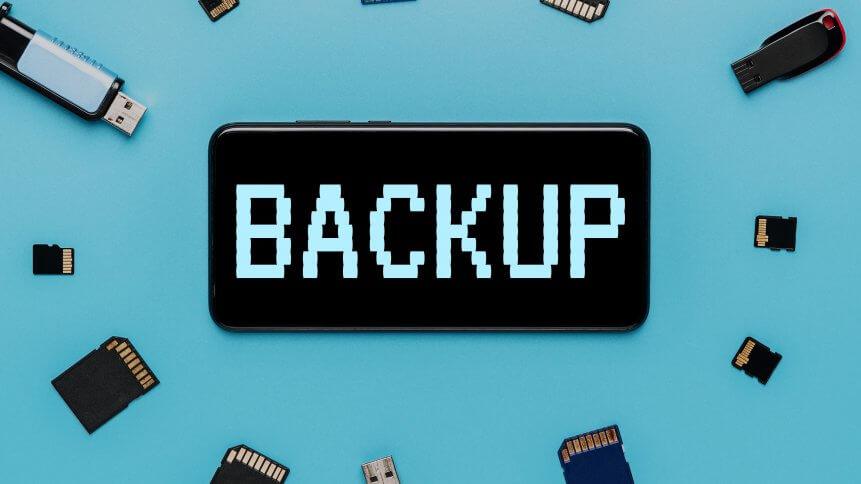World Backup Day: When backups are no longer enough

Today is World Backup Day. According to stats from the data protection advocate folks of World Backup Day, 21% of people never made a backup while 29% of data loss cases are caused by accident. About 113 smartphones are lost or stolen every minute plus 30% of all computers are already infected with malware.
The reality is, backup is essential for everyone today. While consumers should have some backup copies of their data, it’s a totally different game for organizations when it comes to backup. Each organization should be practicing modern backup practices. This includes leveraging cloud backup as it promises faster recovery should there be any incidents.
In conjunction with World Backup Day, Tech HQ caught up with several tech vendors to get their views on backup for organizations today.
According to Jeff Costlow, CISO at ExtraHop, World Backup Day should be a call for all organizations to examine how their backup and recovery plan weaves into their overall security strategy to ensure they are protected in the event of a ransomware attack.
“Sadly, organizations must take further precautions and cannot rely solely on their data backups. Today’s ransomware has become an advanced threat with the “hat trick” of exfiltration, encryption, and software exploitation. It used to be that the sole endgame of ransomware was encryption. Deploy the ransomware, encrypt the files, and demand payment in exchange for the keys,” commented Costlow.
Costlow added that ransomware criminals today have introduced payment incentives at multiple steps in the kill-chain, from exfiltration of data to exploitation of the software. While it is key for organizations to ensure a strong backup and recovery strategy is in place for business continuity, they can no longer guarantee that their private data won’t be released.
Costlow also pointed out that A backup plan is just the beginning. Other points to consider in a ransomware response plan include:
- Initial access: This is where cybercriminals gain a foothold through a wide range of techniques proven effective over time, including phishing emails. Ensure you have user training in place and strong preventative measures including VPNs and firewalls.
- The midgame: This is where the attacker pivots through an organization’s infrastructure, accumulating assets and compromising data. Organizations need strong visibility into East-West traffic to spot ransomware, including lateral movements, domain escalations, command and control actions, and data staging.
- The extortion cycle: Cybercriminals have compromised your systems and your data. A strong backup and recovery process is a critical piece of the puzzle that will keep your business up and running.”
The complexities in the world of backup today
For Don Boxley, CEO and Co-Founder at DH2i, few would argue that an always-on and always available IT infrastructure is critical for the success of virtually any organization in today’s data-driven world. Likewise, he believes few would disagree that backing up data is one of the most critical protections that an organization can implement to help ensure the ability to recover and maintain operations in the event of a failure, disaster, or malware attack – such as ransomware.
Yet, Boxley pointed out that research has shown that while almost 90% of organizations are backing up, only about 41% do so daily, leading to a high number of companies admitting that they have had data loss events that have resulted in downtime.
“On World Backup Day, I would encourage organizations to take a hard look at backup as well as all policies, procedures, and technology they have in place to ensure high availability (HA) and disaster resilience. And then, I would recommend they evaluate if they were to experience a failure, disaster, or cyberattack, how quickly could they recover, and would be able to weather that downtime from a business, legal, and/or regulations compliance standpoint. an ounce of prevention is worth a pound of cure,” said Boxley.
The need for an unbreakable backup
Meanwhile, Surya Varanasi, CTO, StorCentric commented, “On World Backup Day, we are reminded that ransomware and other types of malicious malware can disrupt any environment. And further, while hundreds of thousands if not millions might be at stake for the actual ransom payment, the gravest consequences of ransomware is data loss and downtime. Both present almost incalculable expense, with significant downtime resulting in potentially millions in lost revenue, as well as costly legal fees and regulations compliance cost, in addition to a rise in insurance premiums and decreased customer trust.”
Acknowledging that the process of backing up has become highly automated, ransomware and other malware attacks continue to increase in severity and sophistication. As such, there is the need to protect backed-up data by making it immutable and by eliminating any way that data can be deleted or corrupted.
“An Unbreakable Backup does exactly that by creating an immutable, object-locked format, and then takes it a step further by storing the admin keys in another location entirely for added protection. Other key capabilities users should look for include policy-driven data integrity checks that can scrub the data for faults, and auto-heals without any user intervention.
“In addition, the solution should deliver high availability with dual controllers and RAID-based protection that can provide data access in the event of component failure. Recovery of data will also be faster because RAID-protected disk arrays are able to read faster than they can write. With an Unbreakable Backup solution that encompasses these capabilities, users can ease their worry about their ability to recover — and redirect their time and attention to activities that more directly impact the organization’s bottom-line objectives,” said Varanasi.










